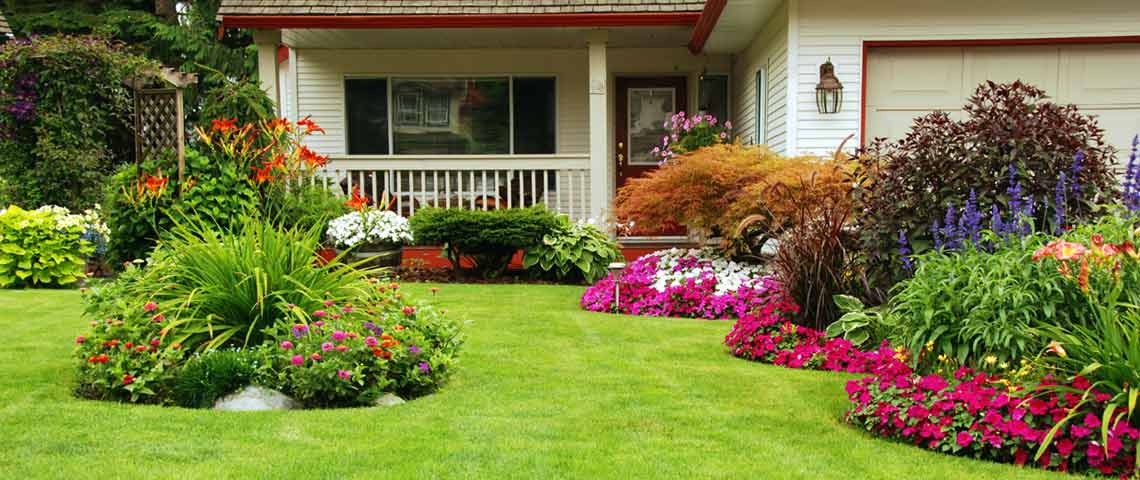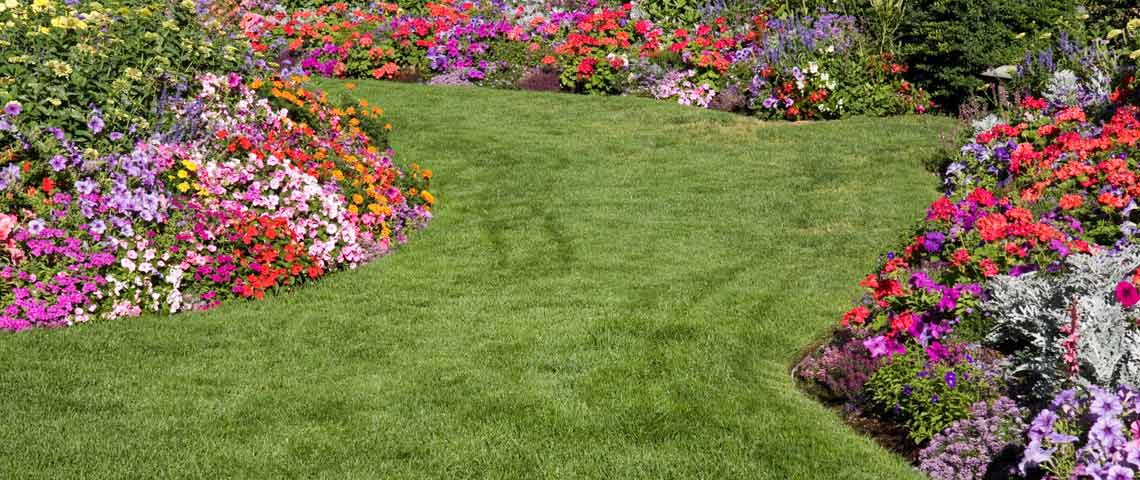All You Need to Know About Bermudagrass
Bermudagrass is valued for its exceptional heat and drought tolerance and a capacity to withstand heavy use and recuperate quickly. This combination of qualities leads many U.S. lawn owners to rely on Bermudagrass for its resilience. But Bermuda's climate requirements limit its widespread use. Depending on where you live and how you use your lawn, Bermudagrass may be a leading choice for you.
- Bermudagrass At a Glance
- Bermudagrass Basics
- Other Bermudagrass Considerations
- Bermudagrass Lawn Care Calendar
Bermudagrass At a Glance
- Warm-season grass.
- Requires full sun and good drainage.
- Suitable for southern lawns from coast to coast.
- Tolerant of heat, drought, traffic and salt.
- High maintenance and nutrient requirements.
Bermudagrass Basics
Bermudagrass is native to tropical and subtropical countries worldwide. The date of its U.S. arrival is unknown, but historical documents reveal it was already established as one of the primary grasses in southern states in 1807.1 Bermudagrass is a perennial warm-season grass, meaning it comes back every year in the proper climate and grows most actively from late spring through hot summer months.
Bermudagrass is more sensitive to cold temperatures than warm-season Zoysia grass or cool-season grasses such as turf-type tall fescue. This lack of cold tolerance limits its use north of the grass-growing region lawn pros call the "transition zone." South of that region, from the Atlantic across southern states into California, Bermudagrass is a leading lawn choice.
Bermuda grass flourishes in sites with full, direct sun and good drainage. It has superior heat, salt and humidity tolerance. Unlike Centipede grass, Bermuda is very drought-tolerant, too. Though most of Bermuda's roots stay within 6 inches of the surface, they can reach 6 feet or more in depth.1 This extensive root system provides more resilience against environmental stresses than other warm-season lawn grasses.
Other Bermudagrass Considerations
Bermudagrass has the fastest growth rate of any of the common warm-season grasses.1 It spreads by both above-ground stems known as stolons and below-ground stems called rhizomes. An aggressive growth rate makes Bermudagrass challenging to contain, but able to endure heavy use. It recuperates from damage far more quickly than most grasses. As a result, it is the preferred grass for athletic fields, golf course tee areas and golf fairways throughout southern regions.
In frost-free climates, Bermudagrass stays green all winter. However, in much of its growing region, it spends winter dormant and brown. Bermudagrass dormancy generally starts earlier and lasts longer than warm-season alternatives such as Zoysia and Bahiagrass. Southern lawn owners often keep Bermudagrass lawns green in winter with cool-season ryegrass for winter color.
Unlike some warm-season choices, Bermudagrass lawns can be started from seed, giving you added options and advantages. Pennington Smart Seed Bermudagrass Grass Seed and Fertilizer Mix offers improved cold tolerance in a wear-resistant, self-repairing, self-spreading lawn. Pennington Smart Seed Texas Bermudagrass Grass Seed and Fertilizer Mix stands up to the Lone Star state's climate and weather, with low growth and deep, drought-tolerant roots.
Both these Pennington Smart Seed mixes contain a temporary, cool-season companion grass that provides stability and early color, then fades away as summer arrives. Plus, Pennington's fertilizer-enhanced seed coat technology speeds establishment and promotes greener grass compared to ordinary Bermudagrasses.
Bermudagrass Lawn Care Calendar
warm-season grasses like Bermudagrass, month-by-month lawn care occurs on a different timetable than grasses grown in the north. This grass flourishes in summer heat and grows most vigorously in hot summer months. By timing lawn care tasks to complement its seasonal cycles, you can help your Bermudagrass lawn look and perform its best.
The farther south you live, the earlier weed seeds and Bermudagrass awaken and begin to grow. Weather conditions can vary significantly from year to year, so look to your grass for the final word. If you're unsure about typical frost cycles for your area, contact your local county extension office for help. Then follow this lawn care calendar for a lush Bermudagrass lawn.
FEBRUARY/MARCH THROUGH MAY
Weed Prevention and Fertilization
Prevent new lawn weeds and feed your established Bermudagrass lawn once grass is actively growing with Pennington Full Season Weed & Feed with Crabgrass Control 25-0-8. Apply any time before crabgrass seeds germinate, which starts when soil temperatures hit 55 degrees Fahrenheit. In far southern and western lawns, that can be early February or even late January some years.
Mowing
Mow your Bermudagrass lawn once in early spring. Remove dormant clippings to help prevent fungal disease. Bermudagrass enters active growth once soil temperatures warm to at least 65°F. Mow to maintain your Bermudagrass lawn at a height of 1 to 1 1/2 inches.
Seeding and Overseeding Thin Lawns
The best time to plant Bermudagrass is late spring and early summer, after soil warms and spring frost danger has passed. Bermudagrass germinates best at soil temperatures between 65°F and 70°F. Most garden retailers offer inexpensive soil thermometers to help you get timing right.
Bare Spot Repair
Repair bare lawn spots with Pennington One Step Complete Bermudagrass. Under proper growing conditions, you'll see results in three weeks or less.
Weed Control and Fertilization
Control emerged weeds once Bermudagrass is actively growing with Pennington Full Season Weed & Feed with Crabgrass Control 25-0-8. If you already applied this full-season product for crabgrass control, you're already set for the season. Wait until Bermudagrass and weeds are actively growing. Wait until at least three to four weeks after application before reseeding treated areas.
Aerate and Dethatch
Bermuda's dense, aggressive growth often leads to excess thatch. Aerate compacted soil and dethatch Bermudagrass as it enters peak growth in late spring and early summer.
Watering
Once growth begins, water your established Bermudagrass lawn so it receives about 1 inch of water per week, including rainfall.
JUNE THROUGH AUGUST
Mowing
Mow to maintain Bermudagrass at 1 to 1 1/2 inches. Never remove more than one-third of the blade in a single mowing. During peak growth, Bermudagrass may need mowing more than once per week.
Fertilization
Because of its aggressive growth rate, Bermudagrass requires regular feeding during peak growth. Fertilize with Pennington Full Season Lawn Fertilizer 32-0-5. This product keeps feeding your lawn all season.
Bermudagrass is drought-tolerant, but it will go dormant during periods of extended drought. To avoid summer dormancy, give your Bermuda lawn 1 to 1 1/2 inches of water from rainfall or supplemental irrigation each week.2
Pest Control
Control grubs, mole crickets, Bermudagrass mites and other lawn pests with Sevin Insect Killer Lawn Granules.
Test your lawn soil every three to four years to confirm soil pH. Bermudagrass grows best with pH between 5.8 and 7.0, but it will tolerate more alkalinity.2 In areas with overly acidic soil, Bermudagrass lawns need lime to thrive.
SEPTEMBER THROUGH NOVEMBER
Mowing
Continue mowing your Bermudagrass lawn at 1 to 1 1/2 inches until it stops growing and enters dormancy.
Weed Control and Fertilization
Four to five weeks before your area's typical fall frost date, feed your Bermudagrass lawn and treat broadleaf weeds. Apply Pennington Full Season Weed & Feed with Crabgrass Control 25-0-8 when grass and weeds are still actively growing.
For temporary winter color, overseed Bermudagrass with Pennington Smart Seed Perennial Ryegrass Grass Seed and Fertilizer Mix or Pennington Annual Ryegrass Grass Seed. Wait until nighttime temperatures are consistently below 65°F. Avoid all weed killers at least three weeks before overseeding.
Watering
Keep watering your Bermudagrass lawn with 1 inch of water per week. Gradually reduce watering as dormancy approaches.
Soil Amendments
Amend your soil based on soil test recommendations. Lime restores nutrient availability in overly acidic soils. Gypsum helps loosen heavy clay soil and enhance root growth.
Leaf Management
Rake or mulch fall leaves so Bermudagrass gets plenty of air and sun.
DECEMBER THROUGH FEBRUARY
Mowing
Dormant Bermudagrass lawns do not need mowing during winter months. Mow green overseeded lawns to maintain cool-season ryegrasses at 2 inches tall.
Watering
Water dormant Bermudagrass lawns only if needed to prevent desiccation during dry periods. For overseeded Bermudagrass, water so that ryegrasses receive at least 1 to 1 1/4 inches of water per week.
Tool Maintenance
Sharpen mowers and clean lawn tools to reduce the risk of lawn disease and be prepped for spring.
Winter Weed Control
Spot-treat green winter weeds. They're easy to spot against a dormant Bermudagrass backdrop.
Yard Patrol
Keep your lawn free from winter debris, such as stones and sticks.
When your plans call for a durable, wear-resistant warm-season lawn that withstands heat and drought, Bermudagrass may be the perfect solution. Pennington is dedicated to producing the finest grass seed and premium lawn care products possible. We're here to help you learn, grow and enjoy a lush, healthy lawn.
Always read product labels thoroughly and follow instructions.
Sources:
1. Duble, R.L., "Bermudagrass – The Sports Turf of the South," Texas A&M AgriLife Extension.
2. Patton, A. and Boyd, J., "Choosing a Grass for Arkansas Lawns," University of Arkansas Cooperative Extension.




